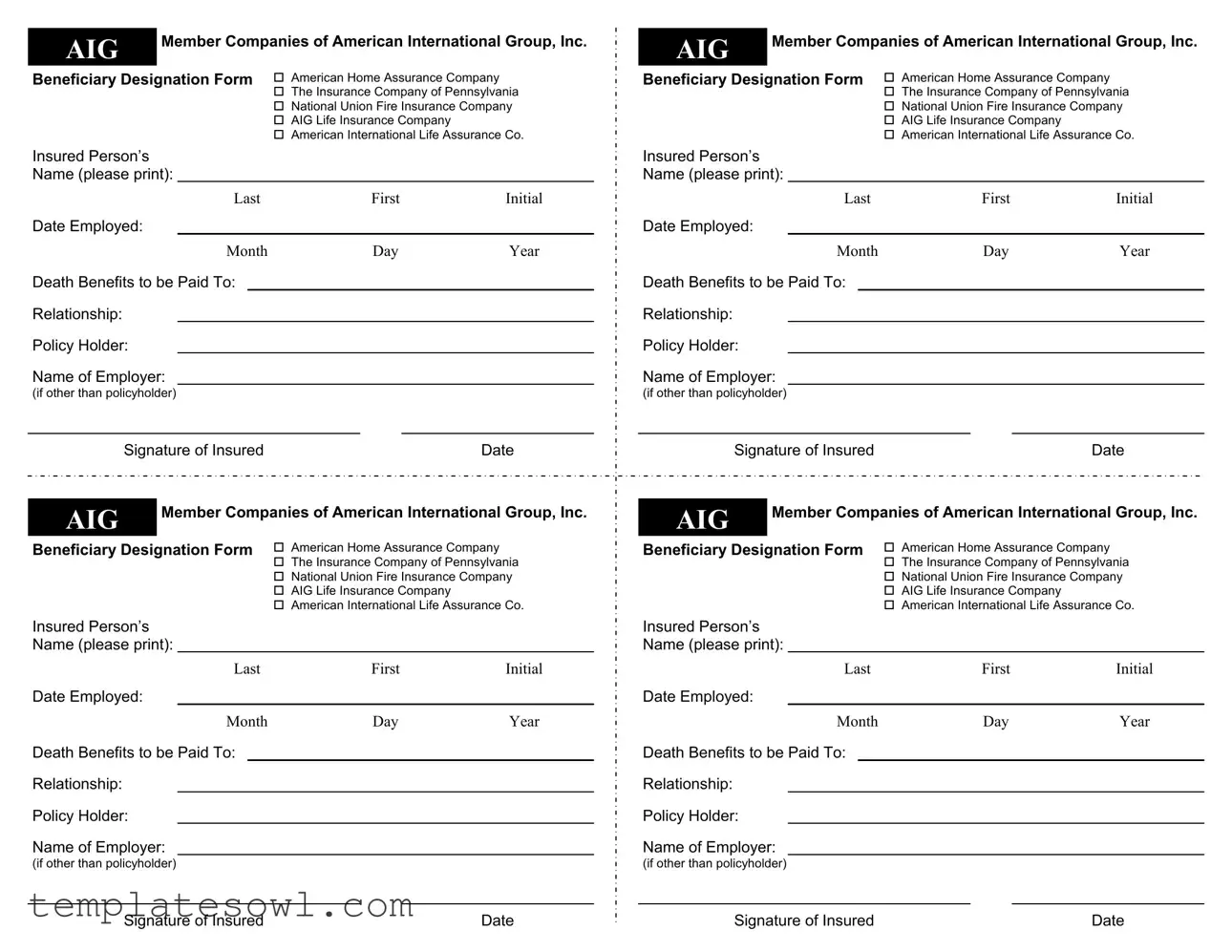What is the AIG Beneficiary Designation Form?
The AIG Beneficiary Designation Form is a document used by policyholders to specify who will receive death benefits from an insurance policy issued by the AIG Member Companies. These may include entities such as American Home Assurance Company, The Insurance Company of Pennsylvania, and AIG Life Insurance Company.
Why do I need to fill out the Beneficiary Designation Form?
Filling out the Beneficiary Designation Form ensures that the death benefits are distributed according to your wishes. Without a completed form, benefits may be subject to state laws or may go through probate, which can delay payments and reduce their value.
Who can I designate as a beneficiary?
You may designate any individual or entity, such as a family member, friend, charity, or trust. It's important to consider the relationship and any potential tax implications when making your selection.
What information do I need to provide on the form?
The form requires the insured person's name, the date of employment, the name of the insurance policyholder, the name of the beneficiary, their relationship to you, and the name of the employer (if different from the policyholder).
How do I submit the completed form?
Once the form is completed and signed, it should be submitted to AIG either through mail or electronically, depending on the instructions provided on the form. Confirming receipt is advisable to ensure that your designation is processed.
Can I change my beneficiary after I submit the form?
Yes, beneficiaries can be changed at any time by filling out a new Beneficiary Designation Form. It is crucial to keep your beneficiary information updated, especially after major life events such as marriage, divorce, or the birth of a child.
What happens if I do not designate a beneficiary?
If no beneficiary is designated, the death benefits may be paid to your estate. This can lead to a longer payout process and may incur additional legal fees. Ultimately, it may not align with your intended wishes for your beneficiaries.

